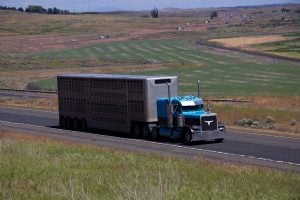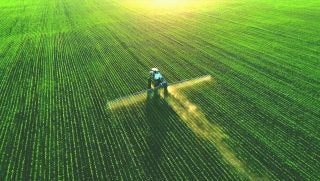Kansas Highway Patrol reported a crash in Labette County that ended with three people dead after the pickup truck they were in struck a steer and then collided with an oncoming tractor-trailer rig.
According to the report, the pickup, a Ram 2500, was traveling East on U166 Highway when the driver came into contact with the steer. After then veering into the westbound lane, the pickup collided with a Peterbilt tractor-trailer rig, despite the rig driver’s efforts to avoid impact.
None of the three occupants in the Ram was wearing a seatbelt.
That same day, in Iowa, another crash involving a rolled cattle truck ended in the driver’s fatality. According to reports, 40 head of cattle were released onto the highway causing two other crashes in the area.

Crashes involving livestock are nothing new. Particularly in states where ranching is common, livestock will inadvertently end up on roadways. Transportation of cattle in trucks via roadways adds yet another opportunity for trucks to overturn and livestock to escape.
In a report compiled by livestock handling specialist Jennifer Woods, the most common months for livestock accidents happen in October, followed by November, August, April, and then May.
Fatality Analysis Reporting System’s reports for 2021 indicated that an upward trend in deaths involving collisions with animals (including wildlife) increased from 1975 to the mid-2000s but leveled off in the past decade. Most deaths occurred from October through December.
Out of these documented accidents, 56 percent involved cattle trucks, and out of the reported cattle accidents, 23 percent involved trucks hauling fed beef, and 70 percent were involved.
When considering cattle truck rollovers, it’s no surprise that trucks hauling cattle are more prone to rollover. They’re more top-heavy,

None of these statistics are surprising. In the fall, livestock are moving pastures, and cattle are being weaned and shipped by truck. It’s tougher to see during shorter days of the year, and drivers, including those hauling livestock, are likely to be impacted by the shortened daylight.
The good news is that trucking companies have begun implementing fatigue management programs for drivers to address reducing accident rates. The industry has a Transporter Quality Assurance program and a Certified Livestock Transporter program, among others, available for haulers.
When it comes to livestock loose on roadways, it’s imperative to remember that all large animal emergencies should prioritize human safety first, animal safety, and then property. Not every accident can be avoided as a motor vehicle operator, but remember to slow down when you’re in cattle country. In the event that livestock are loose on the roadway, this can mean slowing down — a lot.
Local law enforcement, specifically brand inspectors and even extension offices, are often trained and ready to help remove livestock from roadways and locate owners.
»Related: Mitigating farming accidents during busy seasons in agriculture


